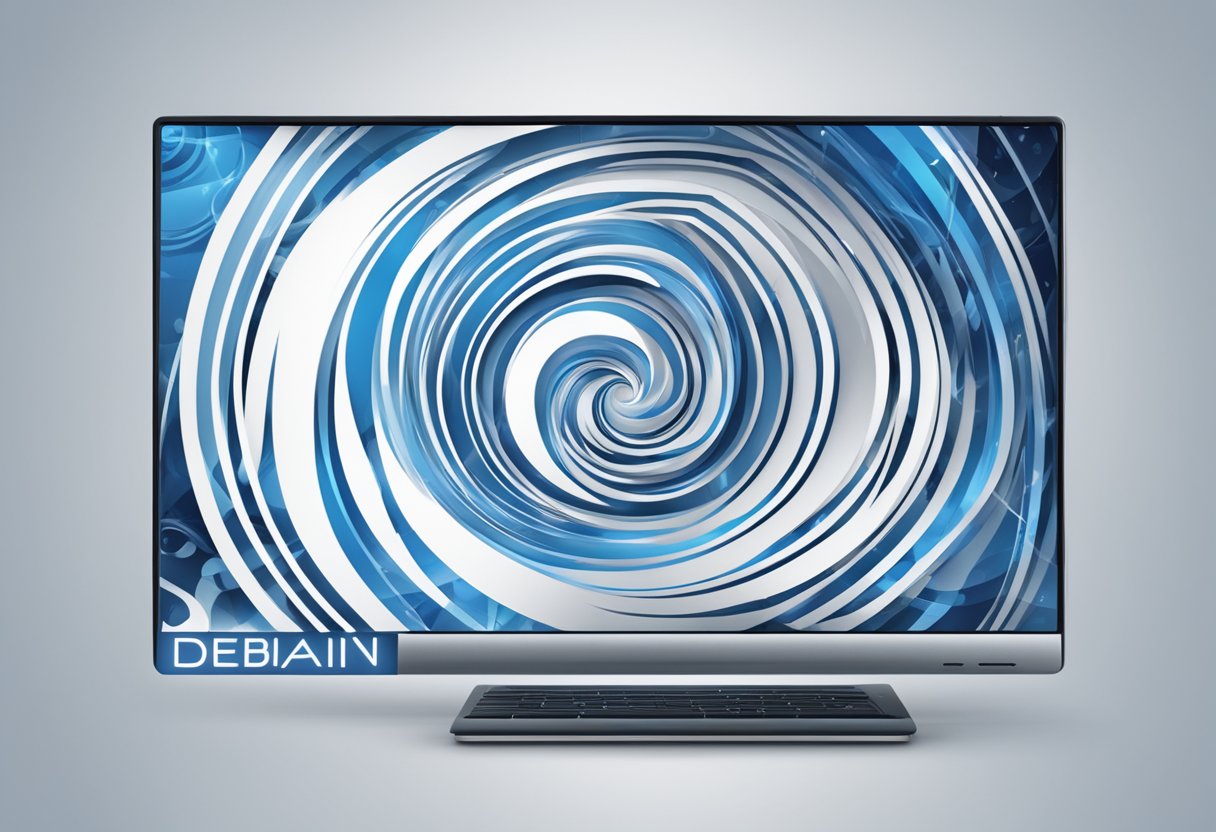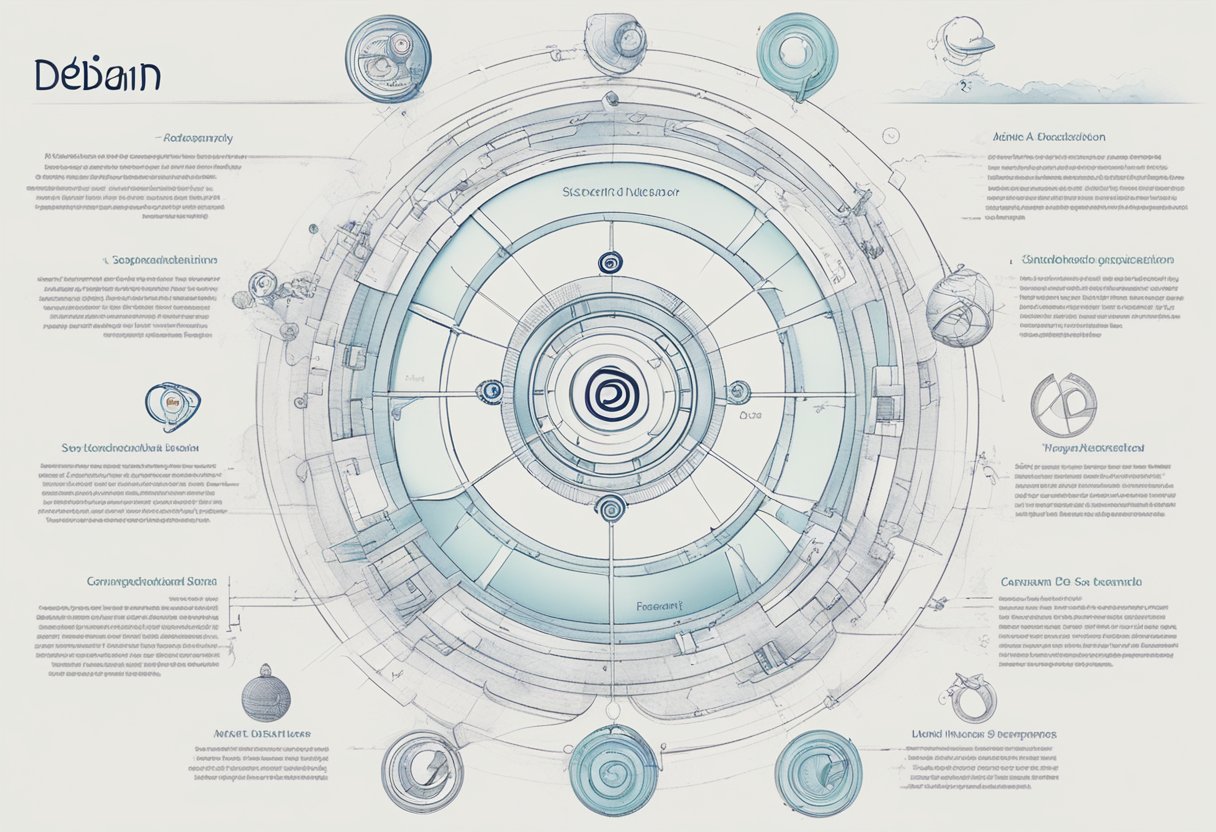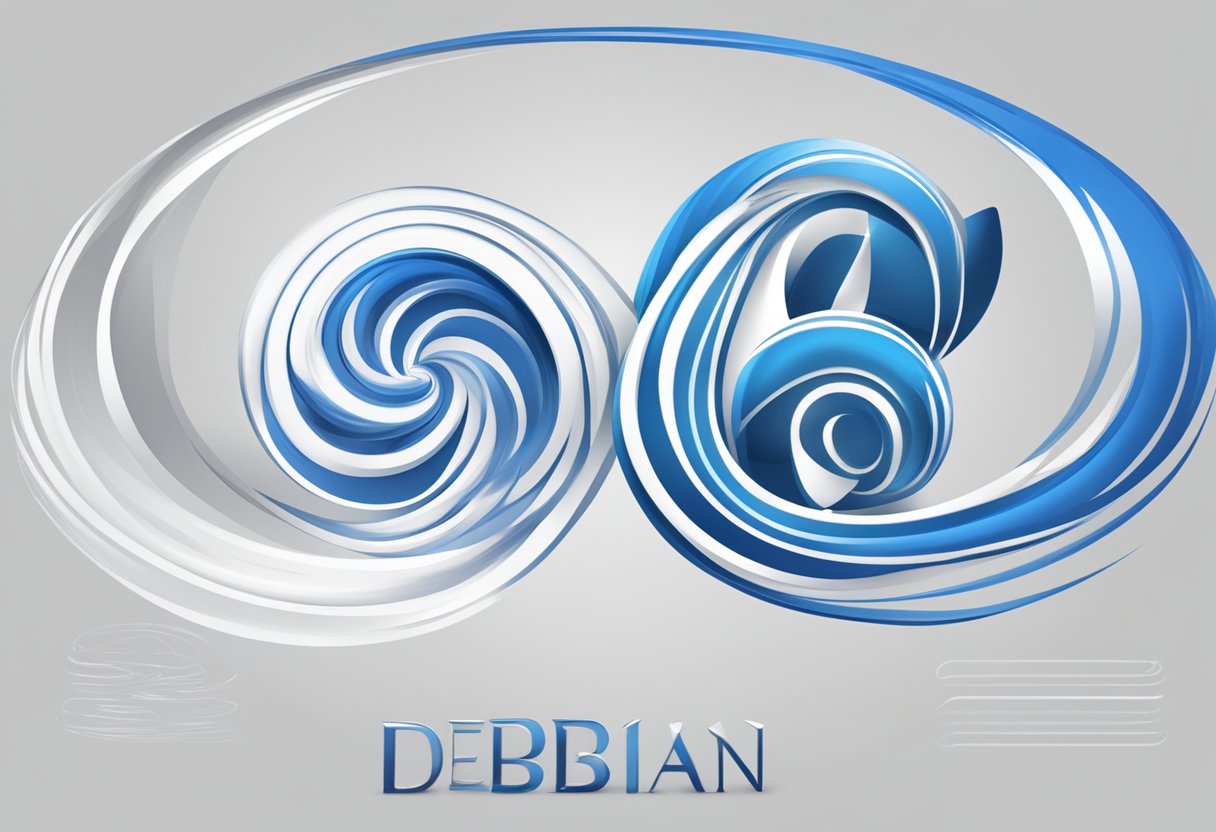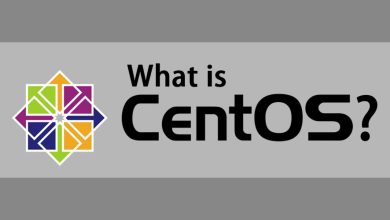What is Debian? A Comprehensive Guide to Understanding Debian Linux

Debian is a free and open-source operating system for computers, servers, and other devices. It is one of the oldest and most popular Linux distributions, known for its stability, security, and flexibility. Debian is maintained and developed by a community of volunteers from around the world, who work together to create a reliable and versatile platform for users of all levels.

Debian is based on the Linux kernel and includes thousands of software packages that can be installed and configured according to the user’s needs. It is designed to be easy to use and maintain, with a comprehensive set of tools and utilities that make it suitable for a wide range of applications. Debian is used by individuals, businesses, and organizations of all sizes, from home users to large corporations and governments.
Key Takeaways
- Debian is a free and open-source operating system that is reliable, secure, and flexible.
- Debian is based on the Linux kernel and includes thousands of software packages that can be customized to meet the user’s needs.
- Debian is used by individuals, businesses, and organizations of all sizes, and is suitable for a wide range of applications.
What is Debian?
Debian is a free and open-source operating system that is widely used in the computing world. It was created by an association of individuals who shared a common goal of developing a free operating system. The Debian Project was established in 1993 by Ian Murdock. Debian is known for its stability, security, and reliability.
Debian is based on the Linux kernel and comes with a wide range of software packages that are available for free. It is designed to be used on a variety of devices, including laptops, desktops, and servers. Debian is also available for many different architectures, including 32-bit and 64-bit x86, ARM, MIPS, PowerPC, and many others.
One of the key features of Debian is its package management system. Debian uses the Advanced Package Tool (APT) to manage software packages. APT allows users to easily install, upgrade, and remove software packages from their system. APT also handles dependencies between packages, ensuring that all required packages are installed before a package is installed.
Debian is known for its strict adherence to the Unix philosophy of “do one thing and do it well.” This means that each package in Debian is designed to perform a specific task and is not bloated with unnecessary features. This approach ensures that Debian remains lightweight and efficient.
In summary, Debian is a free and open-source operating system that is known for its stability, security, and reliability. It comes with a wide range of software packages and is designed to be used on a variety of devices. Debian’s package management system is easy to use and ensures that software packages are installed correctly.
History of Debian
Debian is a free and open-source operating system that was first announced on August 16, 1993, by Ian Murdock. It was initially called the Debian Linux Release, and the name Debian was formed as a combination of the first name of Ian’s then-girlfriend (later ex-wife), Debra Lynn, and his own first name.
Initial Release
The first version of Debian, Debian 0.01, was released on September 15, 1993. It was based on the Linux kernel version 0.01 and included a set of basic tools and utilities. Debian 0.01 was not intended for production use, but rather as a proof of concept and a starting point for further development.
Development Over the Years
Since the initial release, Debian has gone through many changes and updates. The Debian Project has released numerous versions of the operating system, each with its own set of improvements and new features.
Debian has a reputation for being a stable and reliable operating system, thanks to its rigorous testing and quality assurance processes. The Debian Project has a strict policy of only including free software in the operating system, which has helped to make it a popular choice among developers and users who value open-source software.
Over the years, Debian has also become the foundation for many other popular Linux distributions, including Ubuntu, Linux Mint, and elementary OS.
Today, Debian is still actively developed and maintained by the Debian Project, which is an association of individuals who have made common cause to create a free operating system. Debian is currently available in three different branches: stable, testing, and unstable. The stable branch is recommended for production use, while the testing and unstable branches are intended for developers and users who want to stay on the cutting edge of software development.
Features of Debian

Debian is a free and open-source operating system that is composed of thousands of software packages. It is known for its stability, security, and versatility. Let’s take a closer look at these features.
Stability
Debian is known for its stability and reliability. The Debian team focuses on creating a stable operating system that is free from bugs and crashes. The Debian team takes a conservative approach to updates, only releasing updates when they are thoroughly tested and deemed stable. This means that Debian users can rely on their operating system to be stable and reliable.
Security
Debian is also known for its security. The Debian team takes security seriously and provides regular security updates to ensure that the operating system is secure. Debian also uses a package manager called APT, which automatically checks for and installs security updates. This means that Debian users can be confident that their operating system is secure.
Versatility
Debian is a versatile operating system that can be used for a wide range of tasks. It comes with over 59,000 packages, which means that users can easily find and install the software they need. Debian can be used as a desktop operating system, a server operating system, or even as a base for creating custom Linux distributions. This versatility makes Debian a popular choice for a wide range of users.
In summary, Debian is a stable, secure, and versatile operating system. Its focus on stability and security makes it a reliable choice for users who need an operating system they can rely on. Its versatility makes it a popular choice for users who need an operating system that can be used for a wide range of tasks.
Debian’s Organizational Structure
Debian is an open-source project that is maintained by a community of developers and users from around the world. The project is organized in a way that allows individuals to contribute to the project in a variety of ways. This section will provide an overview of Debian’s organizational structure.
Debian Project
The Debian Project is the official organization that oversees the development of Debian. The project is led by a group of volunteers known as the Debian Project Leaders (DPLs). The DPLs are responsible for setting the overall direction of the project and ensuring that it stays true to its core principles.
The Debian Project is divided into several teams, each with a specific focus. These teams are responsible for maintaining different parts of the Debian system, including the kernel, packaging, security, and documentation. The teams work together to ensure that the Debian system is stable, secure, and up-to-date.
Debian Community
The Debian Community is made up of individuals who use and contribute to the Debian project. The community is an essential part of Debian, and it is responsible for many of the project’s successes. The Debian Community is made up of people from all over the world, and it is incredibly diverse.
The Debian Community is organized into several groups, each with a specific focus. These groups include the Debian User Groups (DUGs), which are local groups of Debian users who meet regularly to discuss Debian-related topics. There are also Debian Developers, who are individuals who have been granted the ability to upload packages to the Debian archive. Finally, there are Debian Maintainers, who are individuals who maintain packages in the Debian archive but do not have upload rights.
In conclusion, Debian’s organizational structure is designed to allow individuals to contribute to the project in a variety of ways. The Debian Project oversees the development of Debian, while the Debian Community is made up of individuals who use and contribute to the project. Together, they work to ensure that Debian remains one of the most stable, secure, and up-to-date open-source operating systems available.
How to Install Debian
System Requirements
Before installing Debian, it is important to ensure that your system meets the minimum system requirements. The recommended system requirements are as follows:
| Component | Minimum Requirement |
|---|---|
| Processor | 1 GHz 32-bit or 64-bit processor |
| RAM | 1 GB for 32-bit or 2 GB for 64-bit |
| Hard Disk Space | 10 GB for minimal install, 20 GB for standard install |
| Graphics Card | VGA-compatible graphics card |
| Network Card | Ethernet card (for network installation) |
It is important to note that these are the minimum requirements and that more powerful hardware will result in better performance.
Installation Process
To install Debian, follow these steps:
- Download the Debian ISO image from the official website.
- Burn the ISO image to a CD/DVD or create a bootable USB drive.
- Insert the installation media into your computer and boot from it.
- Select the “Install” option from the boot menu.
- Choose your language, location, and keyboard layout.
- Partition your hard drive according to your needs. It is recommended to create a separate partition for the root directory and the home directory.
- Select the packages you want to install. You can choose from a variety of options, including desktop environments, web servers, and development tools.
- Configure your network settings.
- Create a user account and set a password.
- Wait for the installation to complete.
Once the installation is complete, you will have a fully functional Debian system. It is recommended to keep your system up to date by regularly installing updates and security patches.
Applications of Debian
Debian is a versatile operating system that can be used for a wide range of applications. Here are a few examples of how Debian is used:
Desktop and Laptop Computers
Debian is an excellent choice for desktop and laptop computers. It provides a stable and reliable operating system that can be customized to meet the needs of individual users. Debian comes with a wide range of software packages, including productivity tools, multimedia applications, and games. It also provides a user-friendly interface that is easy to navigate.
Servers
Debian is a popular choice for servers. It provides a stable and secure operating system that can be used to host web servers, file servers, email servers, and more. Debian has a reputation for being reliable and secure, making it a popular choice for businesses and organizations.
Embedded Systems
Debian can be used in embedded systems, such as routers, set-top boxes, and other devices. Debian provides a lightweight and customizable operating system that can be tailored to the needs of specific devices. Debian’s modular design makes it easy to add or remove software packages as needed.
Scientific Computing
Debian is a popular choice for scientific computing. It provides a wide range of software packages that are useful for scientific research, including data analysis tools, simulation software, and programming languages. Debian is also compatible with a wide range of hardware, making it a flexible choice for scientific computing applications.
Education
Debian is used in many educational settings, from primary schools to universities. It provides a wide range of educational software packages, including math and science tools, language learning software, and more. Debian’s stability and reliability make it a popular choice for schools and other educational institutions.
Advantages and Disadvantages of Debian
Pros of Debian
Debian is one of the oldest and most established Linux distributions available to the public for free. This fact has more specific benefits for both developers and users. Debian is composed of many characteristics that can favor us in different ways. Here are some of the advantages of using Debian:
- Free and Open Source: Debian is made of free and open-source software and will always be 100% free. It’s free for anyone to use, modify, and distribute. This is the main promise to its users.
- Stable and Secure: Debian is known for being one of the most stable and secure Linux distributions available. This is due to its rigorous testing process before releasing new versions, and the fact that security updates are released quickly.
- Large Community: Debian has a large community of users and developers who are constantly working to improve the distribution. This means that there are many resources available for users to get help and support.
- Customizable: Debian allows users to customize their installation to fit their needs. This means that users can choose which software packages to install, which desktop environment to use, and more.
- Package Manager: Debian’s package manager, APT, is one of the best package managers available. It makes it easy to install, update, and remove software packages.
Cons of Debian
While Debian has many advantages, it also has some disadvantages. Here are some of the cons of using Debian:
- Not User-Friendly: Debian can be difficult to use for users who are not familiar with Linux. This is because it requires some technical knowledge to install and configure.
- Less Frequent Updates: Debian’s rigorous testing process means that new versions are released less frequently than other distributions. This can mean that users have to wait longer for new features and software updates.
- Limited Software: Debian’s strict free software policy means that some proprietary software is not available in the official repositories. This can make it difficult for some users who need specific software packages.
Overall, Debian is a stable, secure, and customizable Linux distribution with a large community of users and developers. While it may not be the most user-friendly distribution, it has many advantages that make it a popular choice for both developers and users.
Conclusion

In conclusion, Debian is a popular and widely used Linux distribution that is known for its stability, security, and flexibility. It is a free and open-source operating system that is maintained by a community of developers and users around the world.
Debian is a versatile operating system that can be used for a wide range of purposes, from desktop computers to servers and embedded systems. It offers a wide range of software packages, including desktop environments, productivity tools, development tools, and more.
One of the key strengths of Debian is its package management system, which allows users to easily install, update, and remove software packages. This system ensures that the software installed on a Debian system is up-to-date and secure.
Another strength of Debian is its commitment to free software. The Debian project is dedicated to providing a free and open-source operating system that can be used and modified by anyone. This commitment to free software has helped to make Debian one of the most trusted and respected Linux distributions in the world.
Overall, Debian is a powerful and reliable operating system that is well-suited for a wide range of users and applications. Whether you are a developer, a system administrator, or an everyday user, Debian has something to offer.
Frequently Asked Questions
What are the main features of Debian?
Debian is a free and open-source operating system that is known for its stability, security, and reliability. It is maintained by a large community of developers and users who work together to ensure that the software is of high quality and meets the needs of its users. Debian comes with a wide range of pre-installed software packages, including desktop environments, office applications, multimedia tools, and more. It also supports a variety of hardware architectures, making it a versatile choice for different types of devices.
How does Debian compare to other Linux distributions?
Debian is known for its focus on stability and security, which sets it apart from other Linux distributions that prioritize new features and cutting-edge technology. This means that Debian may not always have the latest software versions, but it is less likely to have bugs or security vulnerabilities. Debian also has a large and active community of developers and users who contribute to its development and provide support to others.
What is the latest version of Debian and what are its new features?
As of October 2023, the latest stable version of Debian is 11, codenamed “Bullseye”. Some of its new features include improved support for ARM64 architecture, updated packages for desktop environments, and enhanced security features. It also comes with new software packages, including the latest version of the GNOME desktop environment and the LibreOffice office suite.
What are the system requirements for Debian?
The system requirements for Debian vary depending on the hardware architecture and the type of installation. Generally, Debian requires at least 512 MB of RAM and 10 GB of disk space for a basic installation. However, for a more feature-rich installation, it is recommended to have at least 1 GB of RAM and 20 GB of disk space. Debian also supports a wide range of hardware architectures, including x86, ARM, and PowerPC.
Can Debian be used as a server operating system?
Yes, Debian is a popular choice for server operating systems due to its stability, reliability, and security features. It comes with a wide range of server software packages, including web servers, database servers, email servers, and more. Debian also supports virtualization technologies such as KVM and Xen, making it a versatile choice for different types of server deployments.
Where can I download Debian and how do I install it?
Debian can be downloaded from the official Debian website at https://www.debian.org/. The website provides different installation images for different hardware architectures and installation types. The installation process varies depending on the type of installation, but generally involves booting from the installation media and following the on-screen instructions. The Debian website also provides detailed installation guides and documentation to help users with the installation process
.





